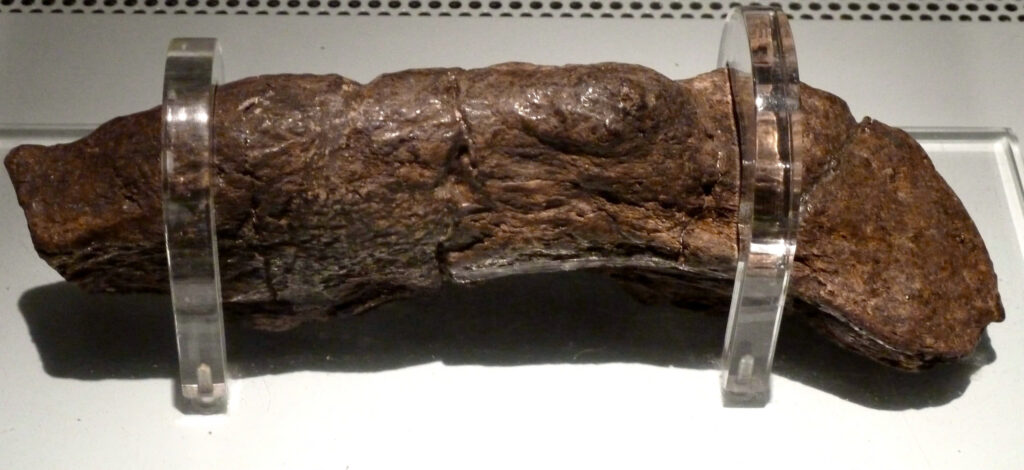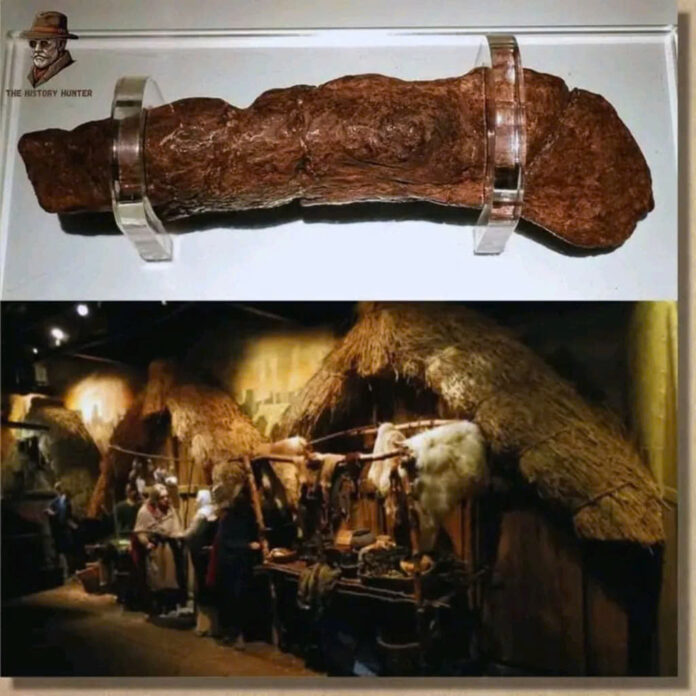In the heart of York, England, lies one of archaeology’s most unusual treasures – the Lloyds Bank Coprolite, the largest preserved piece of Viking excrement ever discovered. This remarkable find, dating back to the 9th century AD, measures an impressive 8 inches in length and 2 inches in width. Today, this ancient specimen is valued at approximately $39,000, making it perhaps the world’s most expensive piece of fossilized feces.
An Unexpected Discovery in Viking Territory

In 1972, construction workers in York were breaking ground for a new Lloyds TSB office when they stumbled upon something extraordinary. The site, located in what was once the Viking settlement of Jórvík, yielded an unusually large piece of preserved human waste. This discovery would soon become one of the most talked-about archaeological finds of the century.
A Window into Viking Health and Diet
What the Ancient Poop Reveals
Analysis of the coprolite has provided fascinating insights into Viking life. The specimen contains evidence of a meat and grain-rich diet, typical of Norse consumption patterns. However, it also tells a story of health challenges. Scientists discovered traces of whipworm and maw-worm eggs, indicating that its creator suffered from parasitic infections – a common ailment in Viking settlements where sanitation was basic at best.
Size Matters

The coprolite’s extraordinary size suggests its creator may have experienced significant digestive issues, possibly constipation. This medical insight gives us a surprisingly intimate glimpse into the health challenges faced by our Viking ancestors.
Life in Viking York
The specimen helps paint a picture of daily life in Jórvík, one of the Vikings’ most significant English settlements. While we often think of Vikings as fierce warriors, this find reminds us that they were also settlers who faced ordinary human challenges. They farmed, traded, and lived in close-knit communities where parasitic infections could spread easily due to limited access to clean water and basic sanitation.
A Modern Celebrity

Today, the Lloyds Bank Coprolite holds a place of honor at the Jorvik Viking Centre in York. While visitors might initially chuckle at this unusual exhibit, its scientific value is immense. This humble piece of waste has become one of our most valuable windows into Viking life, offering insights that more conventional artifacts simply cannot provide.
Video
A Legacy Set in Stone (Well, Sort Of)
The Lloyds Bank Coprolite stands as a testament to how even the most unexpected archaeological finds can revolutionize our understanding of history. This 1,200-year-old specimen continues to fascinate scientists and visitors alike, proving that sometimes the most meaningful historical insights come from the most unlikely sources.

What makes this discovery truly remarkable isn’t just its size or preservation state – it’s the story it tells about everyday Viking life. Beyond the raids and conquests that dominate Viking narratives, this ancient piece of waste reminds us that these were real people who dealt with very human problems, from digestive issues to parasitic infections.
In the end, the Lloyds Bank Coprolite serves as a humble yet powerful reminder that history isn’t just about grand battles and noble deeds – it’s also about the everyday experiences that make us human, no matter which century we call home

